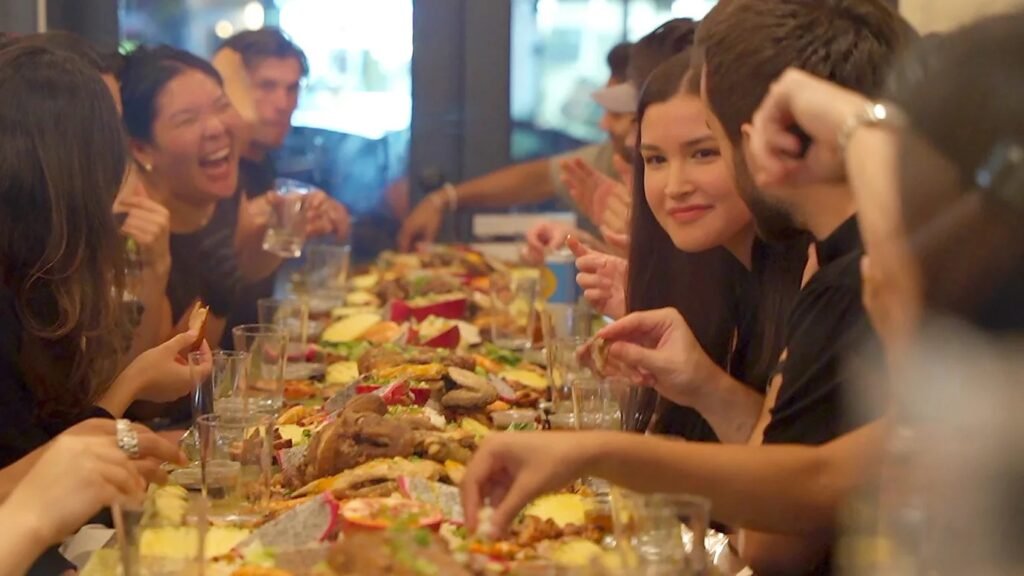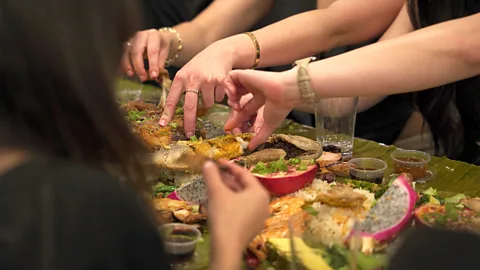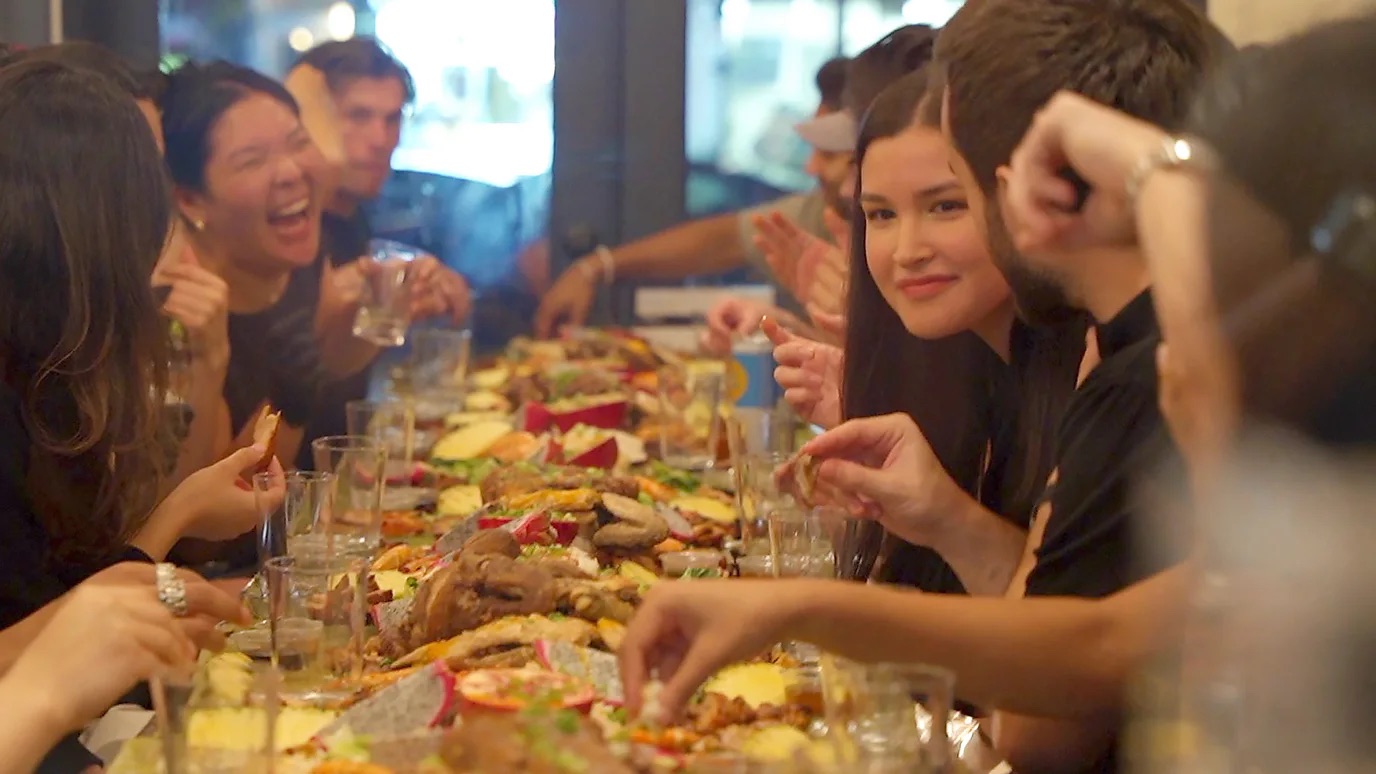
Swept aside by colonialism, this ancient tradition is being reclaimed by a new generation of Filipino chefs who are introducing it to the world.
On an early Friday evening, customers slowly filtered out of a small Filipino restaurant in Manhattan’s Hell’s Kitchen neighbourhood. Rattan-wrapped fixtures hung from the ceiling, bouncing light off the dining room’s white-brick interior and mirrored wall, and the wafting scents of garlic and vinegar filled the modest 400-sq-ft space.
During its normal restaurant hours, Tradisyonis a quick-service spot serving familiar Filipino comfort fare, like adobo-rice bowls and noodle dishes. But as night settles, something special brews in the back kitchen.
After all the regular dinner guests left, chef Anton Dayrit and his team combined all the restaurant’s tables and chairs so they ran the entire length of the dining room. Moving swiftly past each other in a rehearsed choreography, they wrapped the conjoined table in foil and laid several four-foot-long banana leaves across it for an incoming 20-person meal, a dinner package that anyone can book by phone or email.
This wasn’t just any dinner but a version of kamayan: a communal Filipino feast where all the food is laid out on the leafy greens and instead of using plates or utensils, everything is eaten with your hands (“kamayan” in Tagalog). Much like a Japanese omakase meal, the dishes served during a kamayan feast vary depending on the vision of the chef who cooks it. The idea is to present a cornucopia of classic Filipino foods that complement each other when eaten together.
Eating with one’s hands is something that’s practiced in many West African, Middle Eastern and South Asian cultures. But unlike in other regions where the custom has persisted for centuries, kamayan-style dining harkens back to the Philippines’ Indigenous roots but was largely swept aside during Spanish rule, starting in the 16th Century. The practice therefore not only serves as a reminder of how Filipinos ate before colonialism and a physical connection to Filipino heritage, but also as a way of preserving that cultural history in Filipino communities around the world.
In the Philippines today, kamayan meals are typically prepared on important family occasions, like birthdays, holidays and reunions, and are also offered on some restaurant menus. But these feasts have been regarded with a renewed sense of dignity among Filipino and Filipino American chefs, who are keeping the tradition alive in their restaurants and introducing it to a new set of diners abroad. Tradisyon is one of a handful of restaurants in Manhattan offering these hand-eaten kamayan feasts as special packages for big groups.
Compared to other Asian cuisines like Vietnamese, Chinese and Japanese that have become ubiquitous in major cities, Filipino food has had a much quieter international presence. This may be partly due to the nation’s incredible diversity: more than 100 ethnic groups, each with different languages, cultures and culinary practices, call the archipelago home, making it more difficult to pin down what, exactly, Filipino food is.

But thanks to praise from US celebrity chefs like Anthony Bourdain (who proclaimed his love for the sizzling pork dish sisig) and Andrew Zimmern (who recently told the BBC, “It combines all the best Asian techniques, textures and flavours… Filipino food is just as good as it gets”), Filipino cuisine has flourished over the past decade – especially as chefs in the States have spun Filipino dishes in ways that have gradually introduced its flavours to foreign palates.
Filipino food and its communal meals recently trended on social media, and the growing popularity of dishes like kare-kare (oxtail in a peanut stew), pancit (a Filipino noodle dish) and the nation’s now-famous technicolour yam ubeled food research company Tastewise to recently name Filipino food as one of the “most disruptive food and beverage trends of 2025“.
Nicole Ponseca, a Filipino chef and James Beard Award finalist who was integral in popularising restaurant-set kamayan feasts in New York City, recalled growing up somewhat ashamed of seeing family members eating with their hands. “When I opened my first restaurant, it was always in the back of my head to turn everything I was embarrassed about into something I could lean into for a source of integrity and self-esteem,” she said. That first restaurant was Jeepney, a former East Village gem whose kamayan menu included a selection of seasoned pork, whole fish and marinated beef, alongside lumpia (egg rolls), deep-fried shrimp and sweet longanisa pork sausage. Recently, Ponseca has started a similar kamayan concept in Miami.

















